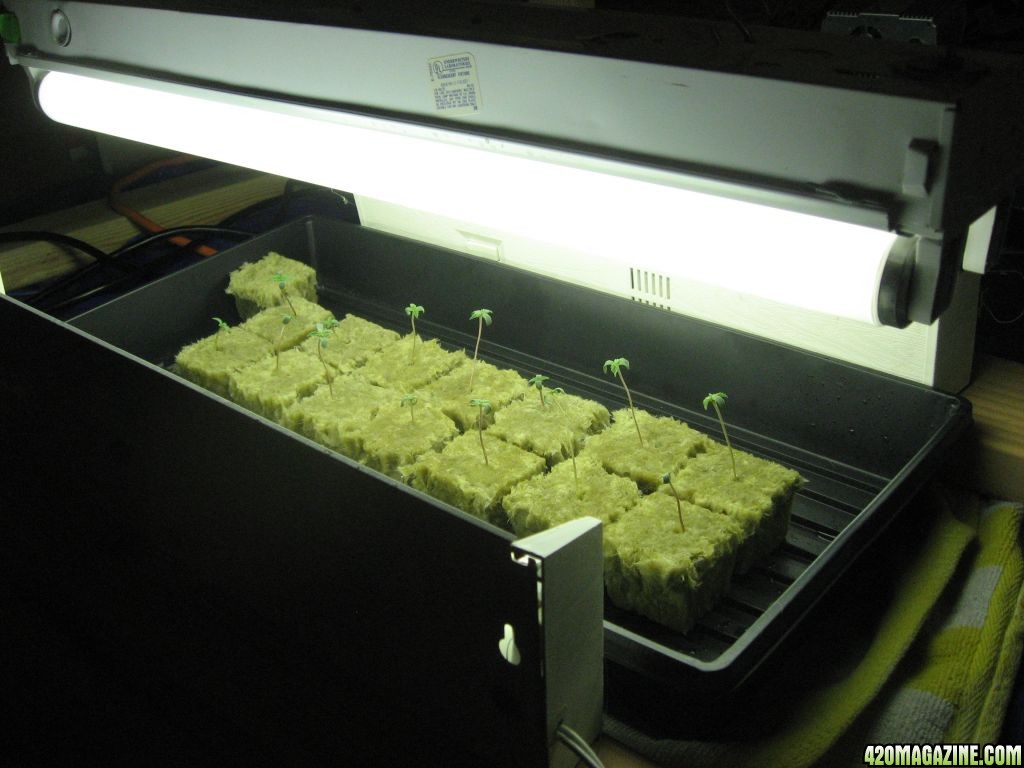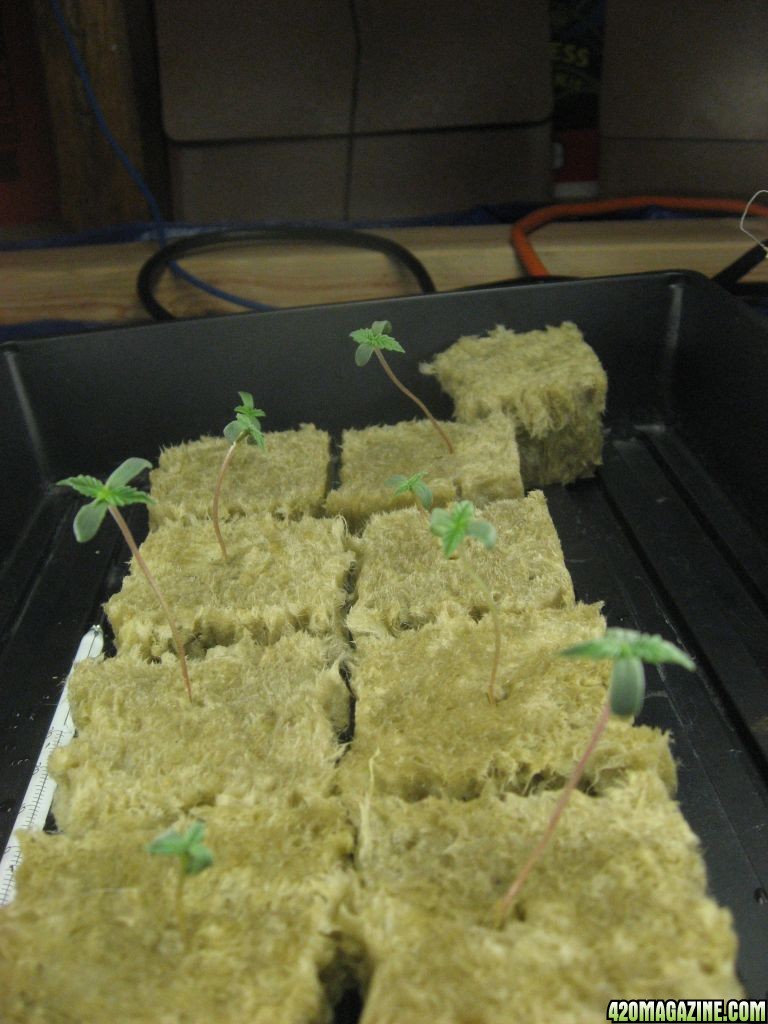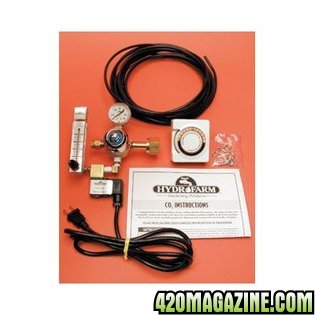Goldbud420
New Member
Hey everybody,
This is my first grow journal, so bear with me. If anybody has any suggestions or questions, fire away.
I am writing this grow journal to evaluate Blue Planet Nutrients Elite 3-part series. First off, I'd like to encourage everyone to check out this link. Secondly, thanks a bunch to Blue Planet Nutrients for their speedy processing and delivery.
I've started 15 feminized White Russian seeds in 2" rockwool cubes, prepared as instructed on the package. I incubated the cubes on a heated seedling mat, under a humidity dome. When the seeds began sprouting, I removed the humidity dome and put the cubes under lights. Currently, they are under 2 x 20 w fluorescent tubes, placed 4" above the seedlings, with a 15 w tube on either side.

The seedlings are only 2-3 days old, and today they received their first feeding. I moistened the cubes thoroughly with a solution made of 2.5/2.5/2.5 mL of Grow/Micro/Bloom, pH corrected to 5.6. The strength of the solution was 268 ppm.

Stay tuned for more fun...
This is my first grow journal, so bear with me. If anybody has any suggestions or questions, fire away.
I am writing this grow journal to evaluate Blue Planet Nutrients Elite 3-part series. First off, I'd like to encourage everyone to check out this link. Secondly, thanks a bunch to Blue Planet Nutrients for their speedy processing and delivery.
I've started 15 feminized White Russian seeds in 2" rockwool cubes, prepared as instructed on the package. I incubated the cubes on a heated seedling mat, under a humidity dome. When the seeds began sprouting, I removed the humidity dome and put the cubes under lights. Currently, they are under 2 x 20 w fluorescent tubes, placed 4" above the seedlings, with a 15 w tube on either side.
The seedlings are only 2-3 days old, and today they received their first feeding. I moistened the cubes thoroughly with a solution made of 2.5/2.5/2.5 mL of Grow/Micro/Bloom, pH corrected to 5.6. The strength of the solution was 268 ppm.
Stay tuned for more fun...





